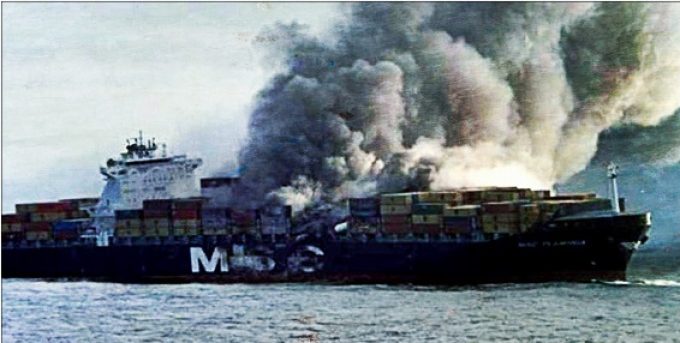
A new era of security and transparency thanks to the combination of container telemetry devices and electronic bills of lading (eBL),
Container shipping could be on the verge of a new era of security and transparency thanks to the combination of container telemetry devices and electronic bills of lading (eBL), leaving less room to hide for shippers who misdeclare their cargo.
The ability to measure temperature changes in real-time has the potential to overcome one of the main challenges that shipping companies have struggled with for a long time - the early detection and control of fires inside containers.
“When an incident begins to unfold, early warning is critical to extinguishing a fire. Ships have smoke detection systems ... but by the time smoke starts coming out of the container, it's often too late,” explained Mike Yarwood, director of loss prevention at the TT Club. "There could be a fire below deck that no one would know about until smoke started coming out of the hatch cover."
Mr Yarwood said the MSC Flaminia was a good example of this, where the tank container was already heating up during loading.
But telemetry also creates benefits for insurers after the fact, in terms of apportioning liability, Mr. Yarwood explained: "In some fires, it's very difficult to pinpoint exactly where the fire started ... in catastrophic cases, millions of dollars are spent by different parties trying to determine that."
Meanwhile, the development of digitalization is accelerating. Earlier this week, the Digital Container Shipping Association (DCSA) unveiled the final phase of its electronic Bill of Lading (eBL) proof of concept (PoC), which aims tocreating a fully compatible standardized eBL document.
Mr Yarwood said the digitization of bills of lading was likely to bring benefits for transparency.
Various shipping companies, including Hapag Lloyd, are working on machine learning algorithms that look for suspicious keywords and descriptors, markers of potentially misdeclared cargo. Having a digitized dataset would make it more scrutinized, Mr Yarwood said. "With the data in digital form, it will be easier to survey them."
He added: “It probably makes things a bit more transparent. If we combine machine learning, constantly update these keywords and descriptors, the systems will have the opportunity to become even more advanced. Whether it will deter bad actors, I'm not sure. I think there will still be a desire to do it."
But Mr Yarwood warned that technology companies looking to enter the maritime industry could end up with more liability than they bargained for. "It goes back to the question of who owns the data," he said. “If it's a technology provider (real-time telemetry or digital eBL) and I or someone else knows they have that data, they're going to be involved in a lawsuit.
"I'd be surprised if they weren't involved in some of the bigger cases in the future."
The Digital Container Shipping Association (DCSA) is a neutral, not-for-profit group founded by major ocean carriers to digitize and standardize the container shipping industry. With a mission to lead the industry towards systematic cooperation, DCSA drives initiatives to make container shipping services transparent, reliable, easy to use, safe and environmentally friendly. DCSA's open source standards are developed with input from DCSA member operators, industry stakeholders, and technology experts from other industries. DCSA member carriers include MSC, Maersk, CMA CGM, Hapag-Lloyd, ONE, Evergreen, Yang Ming, HMM and ZIM. Please download the DCSA standards at dcsa.org.




